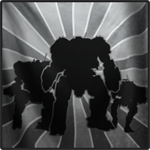@Brandarr Gunnarson
I agree with this, quirks should reflect the design of the mech. It shouldn't be arbitrarily "this mech gets better sensors than this one" it should be focused on what the mechs strengths and capabilities are and what its actual design quirks are.
Examples:
Atlas:
Increased armor and structure all around(massively built, no hardpoints heavily stacked on any parts)
Reduced Heat from Autocannons and Missiles(these weapons are made intentionally visible for intimidation: this has the side effect of making them well ventilated)
Longer target retention time(the Atlas has a big roomy head, sensors are shaped and tuned to not be easily confused)
Torso weapons are more vulnerable to critical hits(drawback of high weapon visibility)
Increased detectability range(its an Atlas, hard to hide from scanners)
Raven 3L:
Increased Sensor Range (highly advanced electronics)
Increased Info Gathering Rate(same reason)
Increased Target Retention Rate(same reason)
BAP counters enemy ECM simultaneously with active ECM set to Disrupt(designed for efficient use and combination of electronic equipment)
Increased NARC range and duration(specifically tooled for tracking enemy mechs)
If these templates were to be used, the Atlas would be a lumbering titan designed partly for fear over practicality, while the Raven would be a mobile yet fragile electronics-heavy vehicle. I hope to see a wide variety of quirks, which fit the character of the individual mechs, while also helping to balance them.
Edited by Top Leliel, 13 September 2015 - 12:50 PM.




























